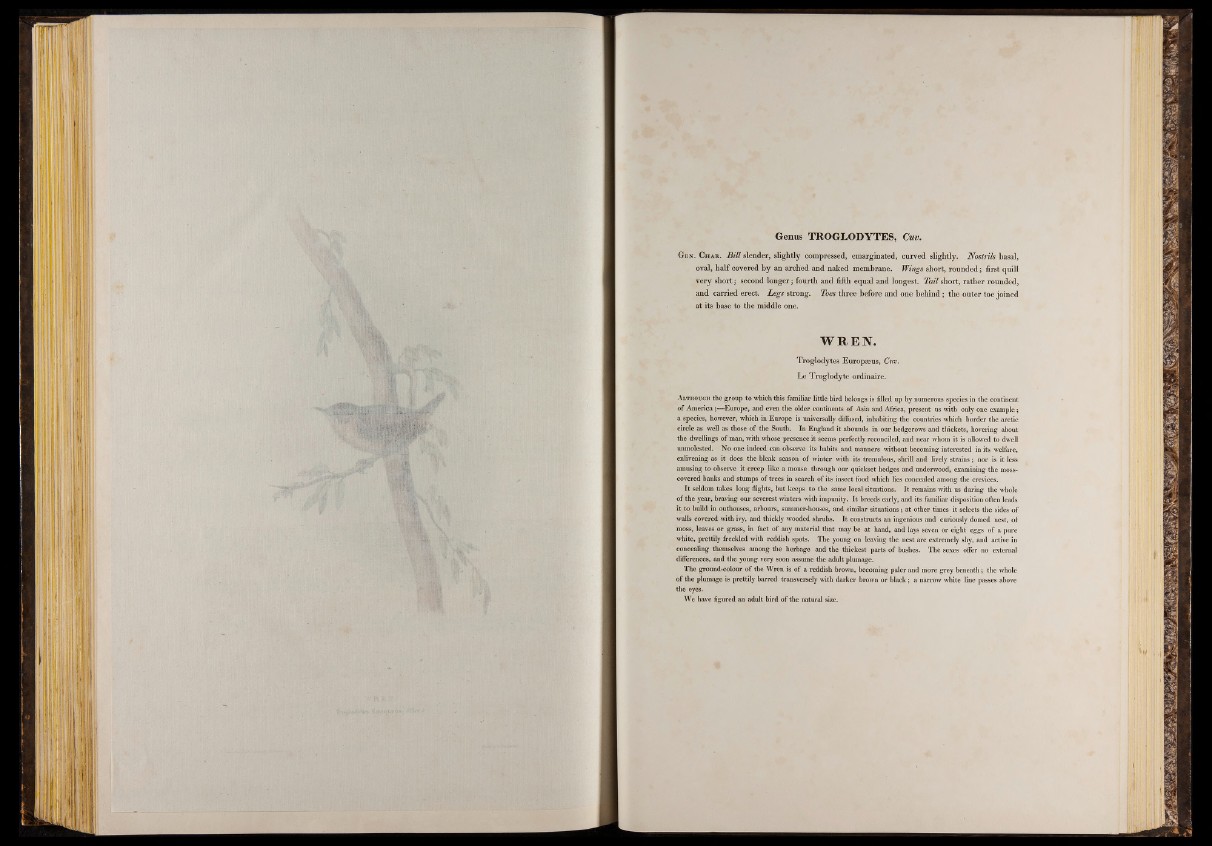
Genus TROGLODYTES, Cuv.
Gen. Char. Bill slender, slightly compressed, emarginated, curved slightly. Nostrils basal,
oval, h a lf covered b y an arched and naked membrane. Wings short, rou n d ed ; first quill
very sh o rt; second lo n g e r; fourth and fifth equal and longest. Tail short, rather rounded,
and carried erect. Legs strong. Toes three before and one b e h in d ; the outer toe joined
a t its base to the middle one.
WREN.
Troglodytes Europaeus, Cuv.
Le Troglodyte ordinaire.
A l tho u g h the group to which this familiar little bird belongs is filled up by numerous species in the continent
of America;—Europe, and even the older continents of Asia and Africa, present us with only one example;
a species, however, which in Europe is universally diffused, inhabiting the countries which border the arctic
circle as well as those of the South. In England it abounds in our hedgerows and thickets, hovering about
the dwellings of man, with whose presence it seems perfectly reconciled, and near whom it is allowed to dwell
unmolested. No one indeed can observe its habits and manners without becoming interested in its welfare,
enlivening as it does the bleak season of winter with its tremulous, shrill and lively strains; nor is it less
amusing to observe it creep like a mouse through our quickset hedges and underwood, examining the moss-
covered banks and stumps of trees in search of its insect food which lies concealed among the crevices.
It seldom takes long flights, but keeps to the same local situations. It remains with us during the whole
of the year, braving our severest winters with impunity. It breeds early, and its familiar disposition often leads
it to build in outhouses, arbours, summer-houses, and similar situations; at other times it selects the sides of
walls covered with ivy, and thickly wooded shrubs. It constructs an ingenious and curiously domed nest, of
moss, leaves or grass, in fact of any material that may be at hand, and lays seven or eight eggs of a pure
white, prettily freckled with reddish spots. The young on leaving the nest are extremely shy, and active in
concealing themselves among the herbage and the thickest parts of bushes. The sexes offer 110 external
differences, and the young very soon assume the adult plumage.
The ground-colour of the Wren is of a reddish brown, becoming paler and more grey beneath; the whole
of the plumage is prettily barred transversely with darker brown or black; a narrow white line passes above
the eyes.
We have figured an adult bird of the natural size.